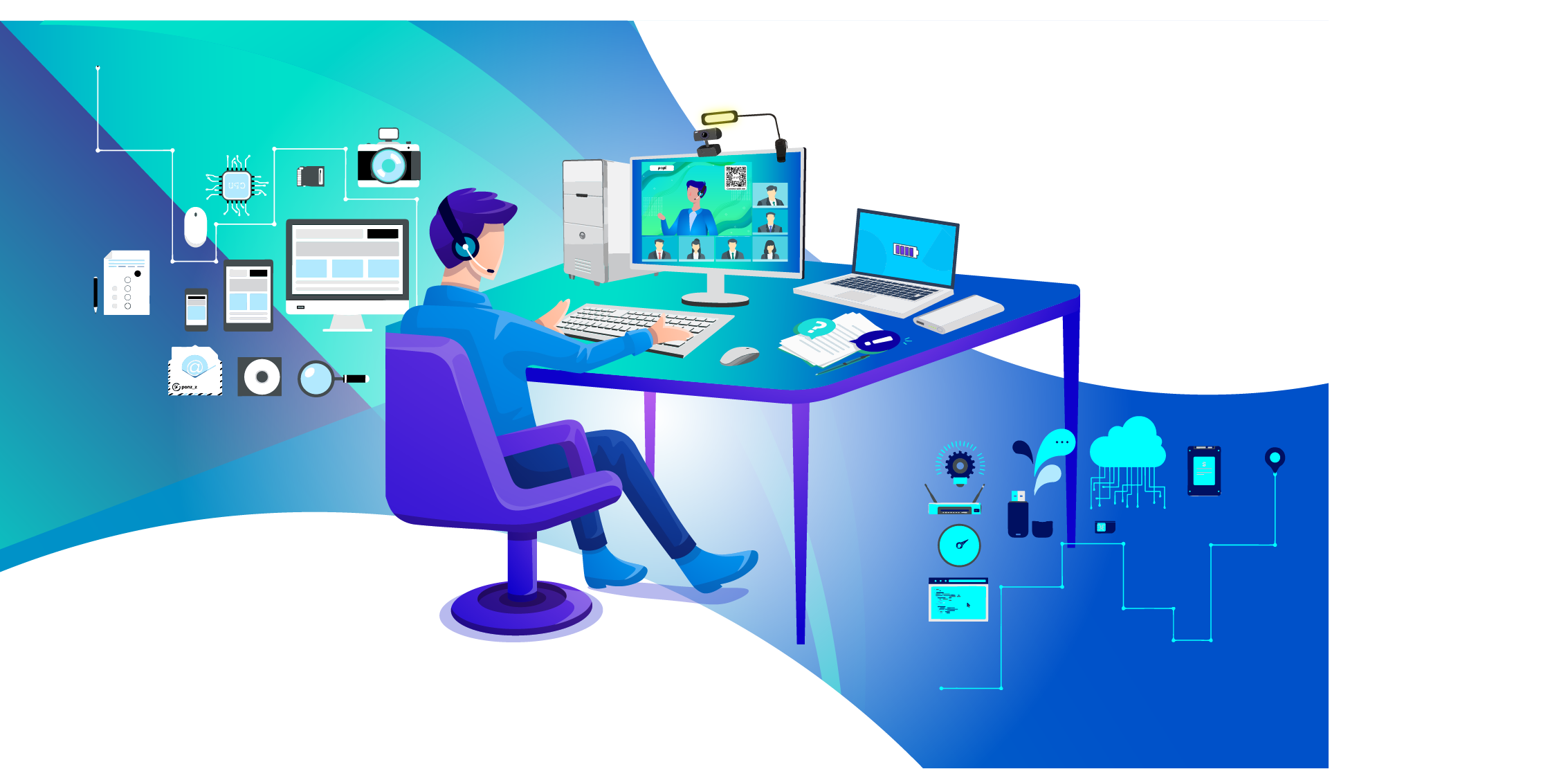QR codes have evolved from a niche technology into a mainstream tool, offering businesses across various industries innovative ways to engage with their customers, streamline operations, and provide additional value.
From retail and e-commerce to healthcare and transportation, QR codes are being creatively integrated into diverse applications, enhancing user experiences and driving efficiency.
However, to leverage the full potential of QR codes, it’s crucial to understand best practices for their use, customization, and security considerations.
This guide delves into tips for successfully and effectively using QR codes, explores innovative use cases across different sectors, and provides advanced tips for creating and customizing QR codes to align with your brand and maximize their impact.
Introduction to QR Codes and How They Work
QR codes, or Quick Response codes, have become ubiquitous in our digital landscape. These two-dimensional barcodes can store a wealth of information, from URLs and contact details to Wi-Fi passwords and promotional offers. When you scan a QR code with your iPhone, your device decodes this information, providing you with immediate access to the content it holds.
The process is straightforward: open your camera app, point it at the QR code, and tap the notification that pops up. This simplicity has made QR codes a favorite tool for marketers and businesses looking to engage with their audiences in innovative ways.
According to SmartInsights, QR codes can be found on a variety of mediums, including business cards, flyers, and product packaging, highlighting their versatility and widespread adoption.
Benefits of Using and Scanning QR Codes on Your iPhone
Seamless Connection to Digital Content
One of the primary advantages of QR codes is their ability to bridge the gap between physical and digital realms seamlessly. By scanning a QR code on your iPhone, you can instantly access mobile-friendly landing pages, portfolios, or exclusive offers, making your interactions more dynamic and engaging.
For instance, Sephora uses QR codes in its stores to provide customers with product information and tutorials, enhancing the shopping experience with just a simple scan.
Efficiency and Convenience
QR codes eliminate the need for typing out URLs or manually entering contact details. This efficiency is particularly beneficial in professional settings. Imagine attending a networking event and exchanging digital business cards with QR codes.
A quick scan and all the pertinent information is saved on your phone, ready for future reference.
According to our knowledge base, this functionality not only saves time but also showcases your tech-savviness and commitment to innovation.
Cost-Effective and Eco-Friendly
Digital business cards with QR codes are a sustainable alternative to traditional paper cards. The cost of designing and printing paper business cards can add up to $5,000 annually.
By switching to digital business card services, you can significantly reduce this expense while also minimizing your environmental footprint.
Popl’s digital business card solutions are designed to be more affordable and convenient, offering a variety of features that traditional cards simply cannot match.
Enhanced Engagement and Interaction
QR codes make it easier for businesses to engage with their audience. By directing users to interactive content, such as videos, surveys, or special promotions, you can create a more immersive experience.
For example, our digital business card services allow you to customize your QR code with your company logo, style, and color, aligning it with your brand identity. This customization not only makes your QR code visually appealing but also reinforces brand recognition and trust.
Security and Privacy
With the increasing importance of data security, our digital business card services incorporate multi-factor authentication to protect your privacy. This added layer of security ensures that your information is safe and accessible only to those you intend to share it with.
Additionally, the ability to monitor networking efforts through insights page reports on Popl Teams adds another dimension of control and transparency.

How to Scan a QR Code with the Built-in Camera App on an iPhone
Scanning a QR code with your iPhone is a straightforward process, thanks to the built-in camera app. Here’s how you can do it in a few simple steps:
-
Open the Camera App: Begin by unlocking your iPhone and tapping on the Camera app. You can find this on your home screen or access it quickly from the Control Center by swiping down from the top right corner of the screen (for iPhone X and later models) or swiping up from the bottom of the screen (for earlier models).
-
Point the Camera at the QR Code: Position your iPhone so that the QR code is clearly visible within the camera frame. Ensure that the QR code is well-lit and in focus. The camera should automatically detect and highlight the QR code within a few seconds.
-
Wait for the Notification: Once the camera recognizes the QR code, a notification banner will appear at the top of the screen. This banner will display a link or information related to the QR code. Make sure to keep the QR code in the frame until the notification appears.
-
Tap on the Notification: Tap the notification banner to open the link or view the information encoded in the QR code. This will direct you to the relevant website, app, or content.
-
Additional Tips for Successful Scanning:
- Stable Hand: Hold your iPhone steady while scanning the QR code. Movement can cause the camera to lose focus.
- Distance: Maintain an appropriate distance from the QR code. Too close or too far can affect the camera’s ability to read the code.
- Environmental Factors: Ensure the QR code is not damaged, distorted, or partially obscured. Clean and clear QR codes scan more efficiently.
Recommended QR Code Scanning Apps for iPhones
While the built-in camera app on iPhones is quite efficient at scanning QR codes, there are times when you might need a dedicated app for more advanced features or better reliability.
Here are some highly recommended QR code scanning apps for iPhones:
QR Code Reader by Scan
- Features: This app is renowned for its speed and simplicity. It not only scans QR codes but also reads barcodes, offering a versatile scanning experience.
- Why Choose It: With a user-friendly interface and the ability to save scan history, QR Code Reader by Scan is perfect for users who frequently scan codes and need an organized way to keep track of them.
- Download Link: QR Code Reader by Scan
QR & Barcode Scanner by Gamma Play
- Features: This app supports all QR and barcode formats. It’s fast, easy to use, and provides additional features like product information and price comparisons for scanned items.
- Why Choose It: Ideal for shoppers and frequent users of QR codes, this app offers a comprehensive suite of tools for a seamless scanning experience.
- Download Link: QR & Barcode Scanner by Gamma Play
Quick Scan – QR Code Reader
- Features: Quick Scan boasts a minimalist design and a fast scanning engine. It also includes features like the ability to create your own QR codes and share them instantly.
- Why Choose It: If you’re looking for an app that not only scans but also generates QR codes, Quick Scan is a great option. It’s perfect for business users who need to create and distribute QR codes on the go.
- Download Link: Quick Scan – QR Code Reader
Troubleshooting Common Issues When Scanning QR Codes on an iPhone
Despite the ease of scanning QR codes with your iPhone, you may occasionally encounter issues. Here are some common problems and their solutions:
QR Code Not Detected
- Problem: Your iPhone’s camera isn’t recognizing the QR code.
- Solution: Ensure that the QR code is well-lit and clearly visible. Try adjusting the distance between your iPhone and the QR code. If the code is still not detected, clean your camera lens and make sure it’s not obstructed. Tapping the screen to refocus the camera can also help.
Blurry or Out-of-Focus QR Code
- Problem: The QR code appears blurry, preventing the camera from reading it.
- Solution: Hold your iPhone steady and give the camera a moment to focus. If the QR code is printed on a glossy surface, adjust the angle to reduce glare. You can also try using the flashlight feature by tapping the flashlight icon in the Camera app to improve visibility.
Incomplete QR Code
- Problem: Part of the QR code is cut off or damaged.
- Solution: Ensure that the entire QR code is within the camera frame. If the QR code is damaged, try to find another copy. If you’re scanning from a screen, adjust the screen brightness and avoid zooming in too closely.
No Notification Banner
- Problem: The camera recognizes the QR code, but no notification banner appears.
- Solution: Go to your iPhone’s Settings app, tap on Camera, and make sure the Scan QR Codes option is enabled. Restart the Camera app and try scanning again. If the problem persists, restart your iPhone.
Third-Party App Required
- Problem: The built-in camera app doesn’t support scanning certain types of QR codes.
- Solution: Download a dedicated QR code scanning app from the App Store, such as QR Code Reader by Scan or QR & Barcode Scanner by Gamma Play. These apps often support a wider range of QR code formats and offer additional features.

Tips for Successfully and Effectively Using QR Codes
QR codes are a powerful tool for businesses looking to engage with their customers and streamline information sharing. Here are some tips for using QR codes effectively:
1. Optimize for Mobile
- Ensure Mobile Responsiveness: Make sure the landing page or content linked to your QR code is mobile-friendly. Since most users will scan QR codes with their smartphones, a seamless mobile experience is crucial.
- Use Short URLs: Shorter URLs create less dense QR codes, making them easier to scan. Consider using a URL shortener before generating the QR code.
2. Strategic Placement
- High-Traffic Areas: Place QR codes where your target audience is most likely to see them, such as storefronts, product packaging, business cards, or event materials.
- Visibility and Accessibility: Ensure QR codes are placed at eye level and are easily accessible. Avoid placing them in locations where scanning might be difficult, like high up on walls or in poorly lit areas.
3. Provide Clear Instructions
- Call to Action: Include a brief instruction or call to action near the QR code, such as “Scan to learn more” or “Scan for a discount.” This encourages users to take action.
- Visual Cues: Adding a small icon of a phone or camera can help users quickly understand that the code is meant to be scanned.
4. Customize Your QR Code
- Brand Integration: Customize your QR code with your brand’s colors and logo. This not only makes it visually appealing but also reinforces brand recognition.
- Readable Design: While customization is important, ensure that the QR code remains easily scannable. Avoid overly intricate designs that might hinder scanning.
5. Test Before Deployment
- Multiple Devices: Test the QR code with different smartphones and QR code scanner apps to ensure compatibility and ease of scanning.
- Different Conditions: Test the QR code in various lighting conditions and from different angles to ensure it’s easily scannable in real-world scenarios.
6. Track and Analyze
- Analytics: Use QR code generators that offer tracking features. Analyze data such as the number of scans, time of day, and geographic location to understand the effectiveness of your QR code campaign.
- Adjust Accordingly: Use insights from the analytics to tweak your campaign and improve its performance over time.
7. Update Content Regularly
- Dynamic QR Codes: Consider using dynamic QR codes that allow you to change the linked content without altering the QR code itself. This is useful for updating information or running new promotions.
- Fresh Content: Regularly update the content linked to your QR codes to keep it relevant and engaging for users.
QR Code Security and Privacy Considerations
While QR codes offer numerous benefits, it’s important to consider security and privacy aspects to protect both your business and your customers.
- Verify the Source - Use reputable QR code generators to avoid malicious code or unwanted redirects. Trusted sources include tools like Popl’s QR code generator. Distribute QR codes through your official channels (e.g., website, verified social media accounts) to ensure authenticity.
- Educate Users - Inform users to be cautious about scanning QR codes from unknown sources. Malicious QR codes can lead to phishing sites or download malware. Teach users how to recognize your official QR codes by incorporating consistent branding elements.
- Secure the Linked Content - Ensure that the URLs linked to your QR codes use HTTPS for secure data transmission. This protects users’ data and builds trust. Regularly audit the security of the content linked to your QR codes. Remove or update any outdated or potentially vulnerable content.
- Data Privacy - Collect only the necessary information from users. Avoid requesting sensitive personal information via QR codes. Be transparent about what data is collected and how it will be used. Provide a privacy policy if you’re collecting user data through QR code interactions.
- Use Dynamic QR Codes - Dynamic QR codes offer better control over the linked content, allowing you to update or deactivate the QR code if a security issue arises. Monitor the analytics for any unusual activity that might indicate security concerns.
Innovative QR Code Use Cases in Various Industries
QR codes have found applications across various industries, offering innovative solutions to enhance user engagement, streamline operations, and provide additional value. Here are some examples of how different sectors are utilizing QR codes creatively:
1. Retail and E-commerce
- Product Information: Retailers like IKEA use QR codes on product tags to provide detailed product information, customer reviews, and instructional videos.
- Exclusive Offers: Brands like Adidas use QR codes on billboards and in-store displays to offer limited-time discounts and promotions, driving customer engagement and sales.
2. Hospitality and Tourism
- Virtual Tours: Hotels and tourist attractions use QR codes to offer virtual tours, providing potential visitors with a preview of their experience.
- Guest Services: Restaurants and hotels use QR codes for contactless menus, booking services, and guest feedback forms, enhancing the customer experience.
3. Healthcare
- Patient Information: Hospitals use QR codes on patient wristbands to provide quick access to medical records, ensuring accurate and timely care.
- Medication Tracking: Pharmaceutical companies use QR codes to track medication from production to delivery, ensuring authenticity and safety.
4. Education
- Interactive Learning: Schools and universities use QR codes to link to additional resources, such as videos, articles, and interactive content, enhancing the learning experience.
- Event Management: QR codes are used for event registration and attendance tracking, streamlining the management of school events and conferences.
5. Entertainment
- Event Tickets: QR codes are used for digital ticketing, allowing attendees to check in quickly and reducing the need for physical tickets.
- Enhanced Content: Magazines and newspapers use QR codes to link to supplementary videos, interviews, and interactive features, providing readers with a richer experience.
6. Real Estate
- Property Listings: Real estate agents use QR codes on signage and flyers to link to virtual tours and detailed property information, making it easier for potential buyers to explore listings.
- Client Engagement: QR codes on business cards can link to the agent’s portfolio, client testimonials, and contact information, facilitating easier communication.
7. Transportation
- Ticketing and Boarding: Airlines and public transportation systems use QR codes for e-tickets and boarding passes, streamlining the check-in and boarding process.
- Real-Time Updates: QR codes at bus stops and train stations can provide real-time schedule updates and service alerts, improving the passenger experience.

Advanced Tips: Creating and Customizing Your Own QR Codes
Creating and customizing QR codes can significantly enhance their effectiveness and align them with your brand identity. Here are some advanced tips for creating and customizing your QR codes:
1. Using Dynamic QR Codes
- Flexibility: Dynamic QR codes allow you to change the linked content without altering the QR code itself, providing flexibility to update information or promotions.
- Analytics: They offer tracking features, enabling you to monitor scan metrics such as location, time, and device type, providing valuable insights into user behavior.
2. Custom Design and Branding
- Incorporate Brand Colors: Use your brand’s color scheme to customize the QR code, ensuring it stands out and aligns with your branding. Tools like Popl’s QR code generator can help with this.
- Add Logos and Images: Integrate your company logo or relevant images within the QR code. Ensure the design remains scannable by keeping the logo or image within the center of the QR code.
3. Optimizing for Scannability
- Simplicity: Avoid overly complex designs that might hinder the QR code’s readability. Ensure there is sufficient contrast between the QR code and its background.
- Size and Placement: Ensure the QR code is large enough to be easily scanned. Avoid placing it on curved surfaces or areas prone to glare and shadow.
4. Test Across Multiple Devices
- Device Compatibility: Test the QR code on various smartphones and QR code scanner apps to ensure broad compatibility and ease of scanning.
- Environment Testing: Scan the QR code in different lighting conditions and at various distances to ensure it is easily scannable in real-world scenarios.
5. Adding Clear Calls to Action
- Instructional Text: Include a brief instruction near the QR code, such as “Scan for a discount” or “Scan to learn more,” to prompt users to take action.
- Visual Aids: Use icons or arrows to draw attention to the QR code and indicate that it should be scanned.
6. Leveraging QR Code Analytics
- Track Performance: Use analytics to track the performance of your QR codes. Monitor metrics such as the number of scans, geographic locations, and time of scans to gain insights into user engagement.
- Adjust Strategies: Use the data collected to refine your marketing strategies. For instance, if you notice high engagement in a particular region, consider targeting more campaigns there.
7. Ensuring Security and Privacy
- Secure URLs: Use HTTPS links to ensure secure connections for users scanning your QR codes.
- Inform Users: Clearly inform users about what they can expect after scanning the QR code, whether it’s accessing a website, downloading an app, or viewing content.
Conclusion
Incorporating QR codes into your business strategy can unlock new avenues for customer engagement, streamline processes, and provide valuable insights through analytics. By understanding and implementing best practices—such as optimizing for mobile, strategic placement, and customization—you can ensure your QR codes are effective and align with your brand identity.
Additionally, exploring innovative use cases across various industries can inspire creative applications tailored to your business needs.
Lastly, prioritizing security and privacy considerations will protect both your business and customers, fostering trust and reliability. With these comprehensive strategies and tips, you can harness the power of QR codes to drive success and innovation in your industry.















